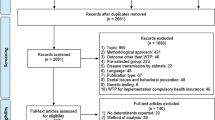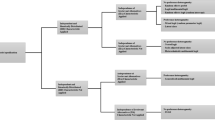Abstract
In multi-attribute two-sided matching (MATSM) problems, the attribute weights play an important role. The existing methods usually neglect the interaction and the effect among multiple attributes, resulting in irrational matching results. This paper takes this interaction into consideration. With the complexity of the matching environment, the uncertainties of agents should be considered. The probabilistic linguistic term set (PLTS) is a useful tool to describe the uncertainty and the limited cognition of agents. Thus, this paper aims to provide a novel MATSM method under the probabilistic linguistic environment with unknown attribute weights. Firstly, the attribute weights are determined by providing the probabilistic linguistic decision-making trial and evaluation laboratory (PL-DEMATEL) method. Besides, this paper constructs the gain and loss (GL) matrices and calculates the agents’ perceived values (PVs) by introducing prospect theory (PT). Then, the PVs are aggregated into the comprehensive PVs (CPVs) based on the obtained attribute weights. Next, this paper also proposes a ranking method, called probabilistic linguistic multi-attribute border approximation area comparison (PL-MABAC) method, to rank the multiple agents, which lay a solid foundation for stable matching constraint of the programming model. The matching results are obtained by solving the programming model. Finally, a case study of matching medical treatment service providers and demanders is presented to validate the proposed method. The comparative analyses and discussions are also provided to demonstrate its effectiveness.








Similar content being viewed by others
References
Jiang, Z.Z., Ip, W.H., Lau, H.C.W., Fan, Z.P.: Multi-objective optimization matching for one-shot multi-attribute exchanges with quantity discounts in E-brokerage. Expert Syst. Appl. 38(4), 4169–4180 (2011)
Chen, X., Zhao, L., Liang, H., Lai, K.K.: Matching patients and healthcare service providers: a novel two-stage method based on knowledge rules and OWA-NSGA-II algorithm. J. Comb. Optim. 37, 221–247 (2017)
Sørensen, M.: How smart is smart money? A two-sided matching model of venture capital. J. Financ. 62(6), 2725–2762 (2007)
Azevedo, E.M.: Imperfect competition in two-sided matching markets. Game Econ. Behav. 83(1), 207–223 (2014)
Wang, M., Li, H.: A research on two-sided matching algorithm between new hired knowledge staff and position requirements. In: 2011 2nd International Conference on Artificial Intelligence, Management Science and Electronic Commerce, IEEE 55–58 (2011)
Korkmaz, İ., Gökçen, H., Çetinyokuş, T.: An analytic hierarchy process and two-sided matching based decision support system for military personnel assignment. Inform. Sci. 178(14), 2915–2927 (2008)
Jorswieck, E. A.: Stable matchings for resource allocation in wireless networks. In: 2011 17th International Conference on Digital Signal Processing, IEEE 1–8 (2011)
Chen, X., Li, Z., Fan, Z.P., Zhou, X., Zhang, X.: Matching demanders and providers in knowledge service: a method based on fuzzy axiomatic design. Inform. Sci. 346, 130–145 (2016)
Gale, D., Shapley, L.S.: College admissions and the stability of marriage. Am. Math. Mon. 69(1), 9–15 (1962)
Roth, A.E.: Common and conflicting interests in two-sided matching markets. Eur. Econ. Rev. 27(1), 75–96 (1985)
Sim, K.M., Chan, R.: A brokering protocol for agent-based e-commerce. IEEE T. Syst. Man Cy. C 30(4), 474–484 (2000)
Wang, J.J., Yang, D.L.: Using a hybrid multi-criteria decision aid method for information systems outsourcing. Comput. Oper. Res. 34(12), 3691–3700 (2007)
Bell, D.E.: Disappointment in decision making under uncertainty. Oper. Res. 33(1), 1–27 (1985)
Suh, N.P.: Axiomatic design: advances and applications. Oxford University Press, Oxford (2001)
Suh, N.P.: The principles of design. Oxford University Press, New York (1990)
Bell, D.E.: Regret in decision making under uncertainty. Oper. Res. 30(5), 961–981 (1982)
Loomes, G., Sugden, R.: Regret theory: an alternative theory of rational choice under uncertainty. Econ. J. 92(368), 805–824 (1982)
Kahneaman, D., Tversky, A.: Prospect theory: an analysis of decision making under risk. Econometrica 47(3), 63–91 (1979)
Tversky, A., Kahneman, D.: Advances in prospect theory: cumulative representation of uncertainty. J. Risk Uncertainty 5(4), 297–323 (1992)
Fan, Z.P., Li, M.Y., Zhang, X.: Satisfied two-sided matching: a method considering elation and disappointment of agents. Soft. Comput. 22(21), 7227–7241 (2018)
Chen, Y., Li, B.: Dynamic multi-attribute decision making model based on triangular intuitionistic fuzzy numbers. Sci. Iran. 18(2), 268–274 (2011)
Dağdeviren, M., Yavuz, S., Kılınç, N.: Weapon selection using the AHP and TOPSIS methods under fuzzy environment. Expert Syst. Appl. 36(4), 8143–8151 (2009)
Pang, Q., Wang, H., Xu, Z.S.: Probabilistic linguistic term sets in multi-attribute group decision making. Inform. Sciences 369, 128–143 (2016)
Xie, W.Y., Xu, Z.S., Ren, Z.L., Wang, H.: Probabilistic linguistic analytic hierarchy process and its application on the performance assessment of Xiongan new area. Int. J. Inf. Tech. Decis. 17(06), 1693–1724 (2018)
Zhang, X., Xing, X.: Probabilistic linguistic VIKOR method to evaluate green supply chain initiatives. Sustain. 9(7), 1231 (2017)
Zhang, Y.X., Xu, Z.S., Liao, H.C.: Water security evaluation based on the TODIM method with probabilistic linguistic term sets. Soft Comput. 23(15), 6215–6230 (2018)
Li, B., Zhang, Y.X., Xu, Z.S.: The aviation technology two-sided matching with the expected time based on the probabilistic linguistic preference relations. J. Oper. Res. Soc. China. (2019). https://doi.org/10.1007/s40305-019-00274-9
Saaty, T.L.: Analytic network process. Springer, New York (2013)
Yue, Q., Peng, Y., Yu, B., Hong, Y., Xiao, Q.: Two-sided matching decision under multi-granularity uncertain linguistic environment. Int. J. U E Serv. Sci. Technol. 8(11), 35–44 (2015)
Yue, Q.: Two-sided matching decision with two-granularity uncertain and incomplete linguistic terms. Int. J. Multim. Ubiq. Eng. 10(2), 121–128 (2015)
Tian, X.L., Xu, Z.S., Fujita, H.: Sequential funding the venture project or not? A prospect consensus process with probabilistic hesitant fuzzy preference information. Knowl.-Based Syst. 161, 172–184 (2018)
Tian, X.L., Xu, Z.S., Gu, J., Herrera-Viedma, E.: How to select a promising enterprise for venture capitalists with prospect theory under intuitionistic fuzzy circumstance? Appl. Soft. Comput. 67, 756–763 (2018)
Gabus, A., Fontela, E.: World problems, an invitation to further thought within the framework of DEMATEL. Battelle-Geneva R&D Center, Switzerland 1-8 (1972)
Tsai, W.H., Chou, W.C.: Selecting management systems for sustainable development in SMEs: a novel hybrid model based on DEMATEL, ANP, and ZOGP. Expert Syst. Appl. 36(2), 1444–1458 (2009)
Tzeng, G.H., Chiang, C.H., Li, C.W.: Evaluating intertwined effects in e-learning programs: a novel hybrid MCDM model based on factor analysis and DEMATEL. Expert Syst. Appl. 32(4), 1028–1044 (2007)
Shieh, J.I., Wu, H.H., Huang, K.K.: A DEMATEL method in identifying key success factors of hospital service quality. Knowl.-Based Syst. 23(3), 277–282 (2010)
Hsu, C.Y., Chen, K.T., Tzeng, G.H.: FMCDM with fuzzy DEMATEL approach for customers’ choice behavior model. Int. J. Fuzzy Syst. 9(4), 236–246 (2007)
Lin, C.J., Wu, W.W.: A causal analytical method for group decision-making under fuzzy environment. Expert Syst. Appl. 34(1), 205–213 (2008)
Dalalah, D., Hayajneh, M., Batieha, F.: A fuzzy multi-criteria decision making model for provider selection. Expert Syst. Appl. 38(7), 8384–8391 (2011)
Chang, B., Chang, C.W., Wu, C.H.: Fuzzy DEMATEL method for developing provider selection criteria. Expert Syst. Appl. 38(3), 1850–1858 (2011)
Govindan, K., Khodaverdi, R., Vafadarnikjoo, A.: Intuitionistic fuzzy based DEMATEL method for developing green practices and performances in a green supply chain. Expert Syst. Appl. 42(20), 7207–7220 (2015)
Pamučar, D., Ćirović, G.: The selection of transport and handling resources in logistics centers using Multi-Attributive Border Approximation Area Comparison (MABAC). Expert Syst. Appl. 42(6), 3016–3028 (2015)
Xue, Y.X., You, J.X., Lai, X.D., Liu, H.C.: An interval-valued intuitionistic fuzzy MABAC approach for material selection with incomplete weight information. Appl. Soft. Comput. 38, 703–713 (2016)
Yu, S.M., Wang, J., Wang, J.Q.: An interval type-2 fuzzy likelihood-based MABAC approach and its application in selecting hotels on a tourism website. Int. J. Fuzzy Syst. 19(1), 47–61 (2017)
Peng, X., Yang, Y.: Pythagorean fuzzy Choquet integral based MABAC method for multiple attribute group decision making. Int. J. Intell. Syst. 31(10), 989–1020 (2016)
Wu, X.L., Liao, H.C., Xu, Z.S., Hafezalkotob, A., Herrera, F.: Probabilistic Linguistic MULTIMOORA: a multicriteria decision making method based on the probabilistic linguistic expectation function and the improved Borda rule. IEEE T. Fuzzy Syst. 26(6), 3688–3702 (2018)
Goodman, R.: Introduction to stochastic models. Courier Corporation (2006)
Papoulis, A., Pillai, S.U.: Probability, random variables, and stochastic processes. Tata McGraw-Hill Education, New York (2002)
Xu, Z.S.: Linguistic decision making: theory and methods. Springer-Verlag, Berlin (2012)
Yoon, K.P., Hwang, C.L.: Multiple attribute decision making: an introduction. Sage publications, Thousand Oaks (1995)
Abdellaoui, M.: Parameter-free elicitation of utility and probability weighting functions. Manage. Sci. 46(11), 1497–1512 (2000)
Deng, W., Xu, J., Zhao, H.: An improved ant colony optimization algorithm based on hybrid strategies for scheduling problem. IEEE Access 7, 20281–20292 (2019)
Deng, W., Zhao, H., Yang, X., Xiong, J., Sun, M., Li, B.: Study on an improved adaptive PSO algorithm for solving multi-objective gate assignment. Appl. Soft. Comput. 59, 288–302 (2017)
Gonzalez, R., Wu, G.: On the shape of the probability weighting function. Cognitive Psychol. 38(1), 129–166 (1999)
Tversky, A., Fox, C.R.: Weighing risk and uncertainty. Psychol. Rev. 102(2), 269–283 (1995)
Zhang, Y.X., Xu, Z.S., Liao, H.C.: A consensus process for group decision making with probabilistic linguistic preference relations. Inform. Sci. 414, 260–275 (2017)
Liao, H.C., Xu, Z.S., Zeng, X.J.: Distance and similarity measures for hesitant fuzzy linguistic term sets and their application in multi-criteria decision making. Inform. Sci. 271, 125–142 (2014)
Acknowledgements
This study was funded by the National Natural Science Foundation of China (Nos. 71771155, 71571123), the scholarship under the UK–China Joint Research and Innovation Partnership Fund Ph.D. Placement Programme (CSC No. 201806240416) and the Teacher–Student Joint Innovation Research Fund of Business School of Sichuan University (No. H2018016).
Author information
Authors and Affiliations
Corresponding author
Appendix
Appendix
See Tables 11, 12, 13, 14, 15, 16, 17 and 18.
Rights and permissions
About this article
Cite this article
Li, B., Zhang, Y. & Xu, Z. The Medical Treatment Service Matching Based on the Probabilistic Linguistic Term Sets with Unknown Attribute Weights. Int. J. Fuzzy Syst. 22, 1487–1505 (2020). https://doi.org/10.1007/s40815-020-00844-7
Received:
Revised:
Accepted:
Published:
Issue Date:
DOI: https://doi.org/10.1007/s40815-020-00844-7




